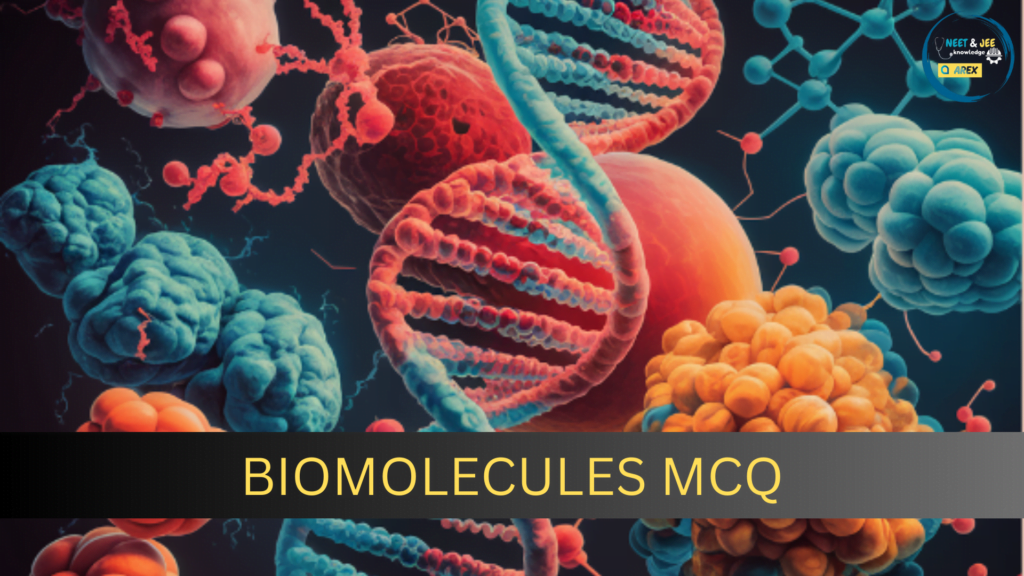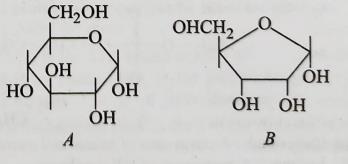
Biomolecules NEET Questions with Answers
Biomolecules are essential compounds that play important roles in the structure and function of living organisms. They are broadly categorized into four major types: carbohydrates, proteins, lipids and nucleic acids.
Carbohydrates, like glucose and starch, are primary energy sources. Proteins, composed of amino acids, perform a vast range of functions including enzyme catalysis, transport and structural support. Lipids, such as fats and oils, are important for energy storage and cell membrane structure. Nucleic acids, including DNA and RNA, are responsible for genetic information storage and transfer.
| NEET 2025 Exam Important Links | |
|---|---|
| NEET 2025 Updated Syllabus | How to read NCERT Biology for NEET |
| Biology Preparation | NEET Eligibility Criteria 2025 |
| NEET Preparation tips for 2025 | NEET Result 2024 |
Biomolecules NEET Questions with Answers
Biomolecules are an important part of the NEET syllabus as they form the foundation for understanding complex biological processes. In the NEET exam, knowledge of biomolecules such as carbohydrates, proteins, lipids, and nucleic acids is essential for grasping how these molecules contribute to the structure and function of living organisms.
Understanding biomolecules also aids in the application of biochemical concepts to medical and health-related scenarios. For example, insights into enzyme functions and metabolic pathways are pivotal for topics like human physiology and biochemistry.
Biomolecules NEET Questions with Answers

A - Alanine - \( \text{R} \) - group is methane.
B - Glycine - \( \text{R} \) - group is hydrogen.
\(\mathrm{C}\) - Serine - R - group is hydroxy methane.

Enhance your preparation with Arexiq’s Mock Test Series where we provide solutions to various MCQs like we provide in this post “Biomolecules NEET MCQ”. Our expert teachers explain the concepts thoroughly, making it easy for you to understand. We offer many types of questions ensuring a clear grasp of concepts.
Faqs of Biomolecules
- What are the main types of biomolecules?
Answer: The main types of biomolecules are carbohydrates, proteins, lipids and nucleic acids.
2. What is the primary function of proteins?
Answer: Proteins have various functions, including serving as enzymes to speed up biochemical reactions, providing structural support and facilitating transport within and between cells.
- Why are nucleic acids important?
Answer: Nucleic acids, such as DNA and RNA, are critical for storing and transmitting genetic information, which is essential for the growth, development and reproduction of organisms.
4. How do biomolecules contribute to health and disease?
Answer: Biomolecules play important roles in maintaining health. For example:
- Carbohydrates: Essential for energy. Deficiencies or excesses can lead to diabetes.
- Lipids: Necessary for cell membranes. Imbalances can result in cardiovascular diseases.
- Proteins: Involved in almost all cellular functions. Deficiencies can lead to conditions like kwashiorkor.
- Nucleic Acids: Mutations in DNA can lead to genetic disorders.
- Why is understanding biomolecules important for NEET?
Answer: Understanding biomolecules is important for NEET as they are fundamental to many biological processes and systems. Questions related to their structure, function and interactions are frequently included in the exam.


